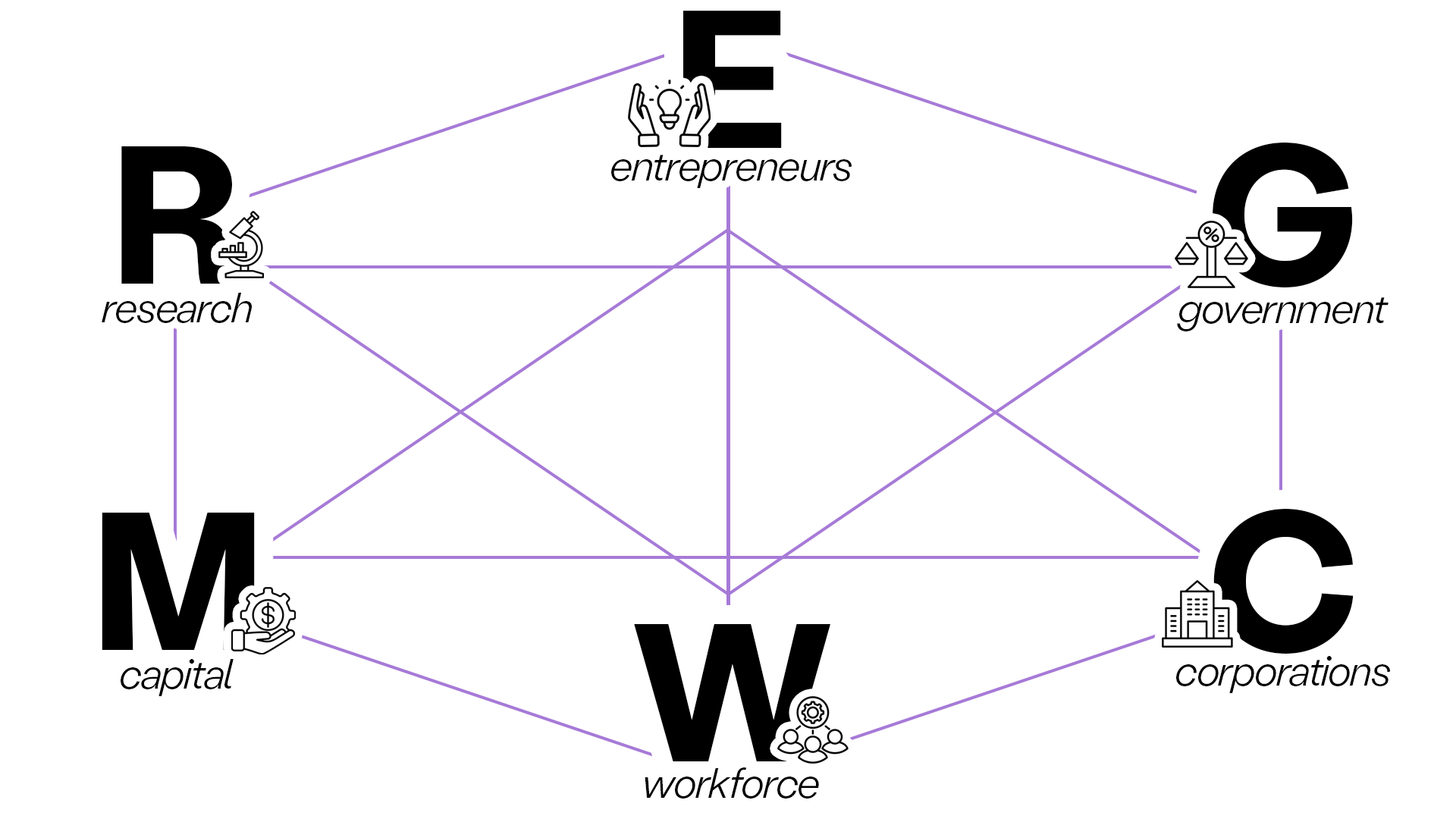
What Should Come Next for the NSF Innovation Engines Communities? (And What About Those That Just Missed Out?)
The U.S. National Science Foundation (NSF) announced the inaugural NSF Regional Innovation Engines program awards last week, providing an unprecedented opportunity for communities across the United States. The Development awards, also called Type-1 awards, aim to create fertile soil for larger innovation ecosystems to grow. Each team will receive up to $1 million over a two-year period, and the opportunity to apply to become a Type-2 Engine at the end of those two years. Type-2 Engines can receive up to $160 million over ten years. Over 46 states and territories are represented, and Engines are innovating across all the major critical technology areas including:
- 15 proposals around Artificial Intelligence (AI)
- 10 proposals contributing to Semiconductor and High-Powered Computing (HPC) technologies
- 5 proposals related to Quantum Information Science and Engineering (QISE)
- 32 proposals related to advanced manufacturing
- 23 related to energy and clean energy
Read more about them and check out the NSF’s breakdown of awards here.
With the potential to transform the nation’s competitiveness, the NSF Engines program paves the way for future innovation and growth following the vision of the CHIPS and Science Act of 2022. While the bipartisan cluster-building approach of the Engines program is similar to last year’s Build Back Better Regional Challenge and the newly announced Tech Hubs program, there are some key differences. First, the scope of the preliminary awards is much smaller. Second, the focus is on seeding ecosystems that have potential, rather than investing in ecosystems that have already demonstrated unique competitive outcomes. Third, this program specifically focuses its attention on groups new to government funding and on geographically and socially/economically diverse groups.
For teams that won awards
Congratulations!! Your hard work has paid off! This should be the first step on a journey towards growing an innovation ecosystem that will reshape the trajectory of your economic growth and set up emerging, globally competitive industries. This, however, is no time to rest on your laurels–in fact, preparation for your future Type 2 application starts today. Here are three things you can do to ensure your plan has a better chance of turning into reality:
Celebrate and acknowledge the achievement
This is a significant accomplishment and your community should be proud! Take the time to celebrate your team’s hard work and dedication. Share the news with your organization, partners, and community, spreading the enthusiasm and generating positive momentum. Post it on LinkedIn! Issue a press release! Hold a launch party! In a field in which the work never ends, we seldom take time to celebrate success–this is a great opportunity to pause and acknowledge the work that your partners and collaborators have done to form this coalition! It’s also a great way to get your broader community excited about the work to come.
Strengthen partnerships and collaborations with other stakeholders
The NSF Engines program emphasizes the power of collaboration and partnerships. Capitalize on your momentum by actively engaging with regional partners, including other research institutions, workforce groups, capital providers, government officials, corporate partners and entrepreneurs. If your Engines coalition leaves out any of the elements illustrated in the diagram below, one of the best ways you can prepare for the challenging work ahead is to broaden your inner circle. By leveraging diverse expertise and resources, you can create an ecosystem that amplifies the impact of your NSF Engine award–turning this from a proposal to build research capacity into a full-ecosystem approach.

Adapted from: Phil Budden and Fiona Murray. “An MIT Approach to Innovation: Ecosystems, Capacities, & Stakeholders.” MIT Lab for Innovation Science and Policy, October 2019.
Type 1 awards are led, for the most part, by universities or non-profits close to the research bench. Some of them incorporate partnerships with local workforce development groups or government engagement, but not all of them. For a development award to grow into a fully-fledged innovation ecosystem, you’ve got to work on building out the connective tissue between the stakeholders that you have yet to engage.
Reflect on what extra help you need
One of the innovative aspects of the NSF Engines program lies in just how much information is available about other awardees and the work they propose. Spend some time reviewing the plans your peers have made, and consider what great ideas might inspire your future work. Reflect, outside of the pressure of an application timeline: What aspects of work did you forget to include? Where might you need to make bigger investments to realize your coalition’s potential? Are there competencies or skills that are missing in your leadership team? In short–where do you still need help? A robust network of partners who have been engaged in ecosystem building across different industries and communities are competing right now for the opportunity to help you, as a part of the Engines Builder Platform. Spending some time in reflection now can help you prepare to tap into these resources as soon as they are available–saving time, and ensuring you put your award to its best uses.
For the teams that didn’t win Type 1 awards
Chances are, you put just as much time and thought into your application as the winners did. In the competitive funding of ecosystem building, what sets great communities apart is the breadth of their outreach, the quality of their commitments, and their ability to sustain a movement in good times and bad. Now is the most important time to show your determination and belief in the ecosystem your city can build! Here are a few things to make sure that all of the work that went into your application doesn’t simply disappear.
Secure your matching commitments
If you already started to engage funders in your community, now is a great time to schedule a conversation about what the work looks like moving forward. If you were able to raise matching funds or gather organizational commitments in support of your work, circle back to make sure that those commitments still stand. A little bit of perseverance in the face of adversity can do wonders in helping supportive partners feel a sense of confidence in your work–with or without federal funds.
Rally the troops
Your partners might be discouraged today, but the only thing that has changed in what you proposed is a little bit of federal money. Think of all of the political barriers you moved out of the way, the relationships you built, and the plans you clarified! Your community’s needs and your country’s needs have not changed in the last week. Now is a great time to remind partners of what is at stake–and encourage their continued engagement.
DON’T recycle your Engines application for Tech Hubs
It might be tempting to look at the work that your community did to support this application and simply find and replace “Engines” with “Tech Hubs.” There’s nothing legally preventing you from doing this, but such an approach is unlikely to be successful. The expectations, activities, and qualifications are fundamentally different between the Engines and Tech Hubs programs. Engines were meant to propose a “from scratch” solution, while the Tech Hubs program is looking for a recipe ready for your next big family BBQ. While your coalition relationships might help you prepare for the next application, you’ll need to think differently about your ecosystem’s strengths and weaknesses to be successful–not just slap a new title on your old word document.
Conclusion
Whether you did or didn’t win an NSF Engine Type 1 award, your hard work and dedication to your community is to be commended. Simply fielding an application at this scale takes a significant commitment of time, expertise, and partnership. Embrace this transformative journey and unleash the power of innovation within your region.
This is just one of many opportunities to build your regional innovation ecosystem that are yet to come. And in fact, another great opportunity to build your community was announced today, in the Tech Hubs NOFO. While the nature of the work this next opportunity will fund is similar in theme, it is very different in application. As a result, winning this Engine grant doesn’t guarantee you a Tech Hub, and losing it doesn’t have any bearing on your Tech Hub prospects. Whether your work was funded this week, or remains to be funded in the future, announcements like these shouldn’t be seen as either finish lines or stop signs. There is both more work and more possibilities ahead for all communities trying to build a better economic future for themselves and for the country.
At a time when universities are already facing intense pressure to re-envision their role in the S&T ecosystem, we encourage NSF to ensure that the ambitious research acceleration remains compatible with their expertise.
FAS CEO Daniel Correa recently spoke with Adam Marblestone and Sam Rodriques, former FAS fellows who developed the idea for FROs and advocated for their use in a 2020 policy memo.
When the U.S. government funds the establishment of a platform for testing hundreds of behavioral interventions on a large diverse population, we will start to better understand the interventions that will have an efficient and lasting impact on health behavior.
Integrating AI tools into healthcare has an immense amount of potential to improve patient outcomes, streamline clinical workflows, and reduce errors and bias.